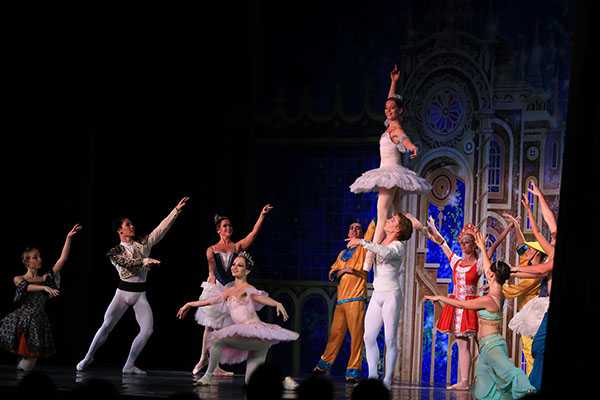Royal Moscow Ballet puts on a mesmerising show
A thunderous applause filled the Gaborone International Convention Centre on Saturday evening. It was the curtain call, and the audience was still savouring a great moment that they had just witnessed on stage. For close to three hours, the esteemed Royal Moscow Ballet took the audience on a magical ride.
Something that sets ballet apart from other dance forms is the fact that it requires a certain level of understanding and respect. One cannot attend a ballet show and spend the entire evening engaged in conversation. And the few times that one can show their excitement is when they comment about a certain step that takes their breathe away, and then keep quiet just as quickly.
Besides requiring one to remain engrossed on the performance, one also has to keep their ears open to the music, mostly classical that forms part of the performance. By the end of the evening the Royal Moscow Ballet had earned their respect. Celebrating fifteen years this year, the dance company put together a show that celebrates some of the most revered Russian composers behind some famous ballet and opera pieces.
The company consists of graduates from the best Russian choreography, ballet and dance schools premiered as the Royal Moscow Ballet on August 12th, 2002. Anatoly Emelianov and Anna Aleksidze founded it. The duo has created more than 20 modern and 15 classical ballets to date.
Starting off the show with a Paganini (a one act ballet) scored by Sergei Rachmaninov, the audience was magically wowed with moves they only see on television and they can only dream of. A lead Ballerina (female dancer) dressed in a black costume set the tone for an electrifying evening. Captivating and her hairpins glistening like diamonds in the light, it was a sight to behold as she danced on her toes (“en pointe”). Hair tied in bun, she was light on her feet and was like an electric magnet pulling in the audience and silently commanding them to follow her every move.
Divided in three acts, the first act was serious but equally entertaining. The last two sets were more relaxed and some comical providing the audience with the opportunity to see the versatility of the dancers as well as their lighter sides. Other pieces that they performed included Rhapsody on a Theme of Paganini, scenes from ballet scored by Pyotr Tchaikovsky including Swan Lake, Sleeping Beauty, and the Nutcracker, as well as Aleksander Borodin’s The Polovtsian dance from the opera The Prince Igor.
Displaying traditional (“Pas”) steps and positions such as “Devant,” (in front), “Pas jete” (throwing step), “Releve” (raised) not forgetting the leaps, the dancers stole the breath of the audience. Some silently shed tears in the dark hall as they marvelled at the level of perfection that was displayed on stage. Others were blown away at how it just came natural to the dancers to glide and twirl on stage without missing a step and still manage a perfect landing without staggering.
The audience could tell at the end of each piece that as easy as it looked for a dancer to complete a step, they had been practising and spending many hours in training perfecting their moves. It takes many years of practice for the dancers to perfect their art and that is why they start from a young age.
The Saturday show was the first of many events where the dance company is expected to delight ballet lovers locally as well as at other venues in Johannesburg, Pretoria, Bloemfontein, East London, Durban and Port Elizabeth.
History has it that ballet was first performed in Italy in the early 1600’s.
The first ballet school was officially opened in France in 1661. Back then, only men were allowed to dance. And the women called ballerina’s first danced ballet in 1681. Beauchamps, a French ballet teacher is credited for creating the five basic steps of ballet.
Additional reporting: Wikipedia.






